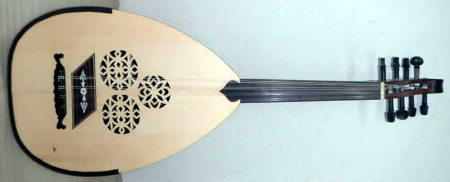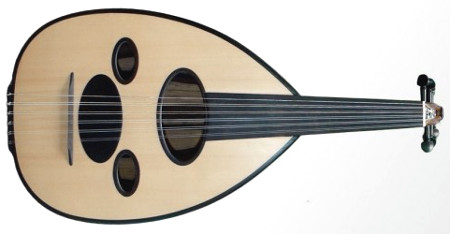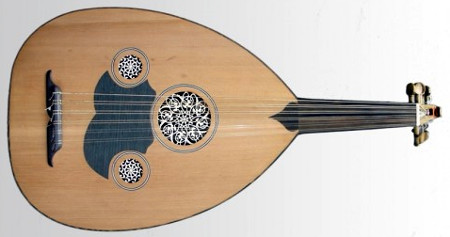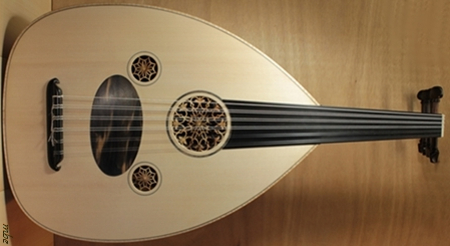Alternative names: Ud, Al-ud, Oud Sharqi (as opposed to the Oud Arbi), Barbat (In Iran) - see under Barbat for Iranian variant.
Origin: Middle East, over 5000 years ago.
Tuning: D2, G2 G2, A2 A2, D3 D3, G3 G3, C4 C4.
Strings/Courses: Usually 11/6, but sometimes 13/7 or 10/5
Further notes: There are also Iraqi Ouds with 13 strings, adding an extra higher course to the Arabic type, and Egyptian Ouds without the single lowest course. Nylon strings.
Scale Length: 600-620mm for the Arabic oud. There is however quite a wide range used by different luthiers.

Oud Arbi
Alternative names: Oud Ramal
Origin: Tunisia, Morocco and Algeria.
Tuning:
Strings/Courses: 8/4
Further notes: Not to be confused with the similar Kwitra from Algeria.
Scale Length:

Oud Bashir
Alternative names: Iraqi Oud, Ud Bashir
Origin: Iraq
Tuning: C#2, F#2 F#2, B2 B2, E3 E3, A3 A3, D4 D4
Strings/Courses: 11/6 or 12/6
Further notes: Has a floating bridge and open soundholes. Developed in Iraq and made famous by the Oud player Munir Bashir.
Scale Length: About 600mm

Oud, Turkish
Alternative names: Ud
Origin: Middle East, over 5000 years ago.
Tuning: C#2, F#2 F#2, B2 B2, E3 E3, A3 A3, D4 D4
Strings/Courses: 11/6
Further notes:
Scale Length: 580-590mm for the Turkish oud. There is however quite a wide range used by different luthiers.

Oud, Zenne
Alternative names:
Origin: Middle East, over 5000 years ago.
Tuning: C#2, F#2 F#2, B2 B2, E3 E3, A3 A3, D4 D4
Strings/Courses: 11/6
Further notes: Smaller version of the oud, often played by those with smaller hands or who want a smaller bodied instrument.
Scale Length: 540-570


